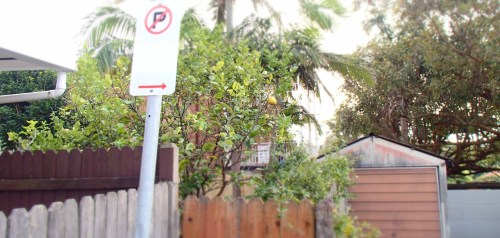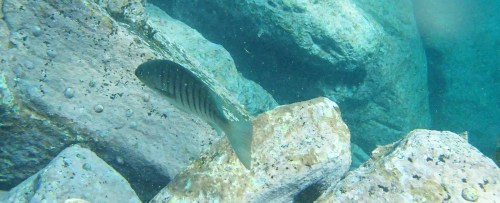Today, feeling the need for a healthy soup and having the time for a quick forage near home, I took a bucket and knife to the park to pick what might be best be called a mess of hot greens. There were seven of them, none picked further than 200m from the flat, and all considered to make at least some sense for a soup with onions, potato and buttermilk (or sour cream); the kind of thing where either spinach or cress might first come to mind. The mix was only partly planned, with some mind given to how much was peppery, how much could be bitter and how much plain spinach-like bulk it might need. Beyond that, any basket of wild greens this diverse would likely never be the same twice and end up always somewhat arbitrarily based on mood, location and season.
I don’t know a lot about the different herbal healing and healthful properties of all the plants involved, but I do know that they are there in varying degrees. I also know that all of these greens are ones that you can overdo; in terms of flavour (bitterness most particularly), potentially unhealthy side effects (like excessive oxalates and saponins), or both. And I am absolutely convinced that all wild greens should be consumed in diversity, small amounts at a time, and fairly regularly. In Michael Pollan’s In Defence of Food: An Eater’s Manifesto he offers one particular overriding piece of dietary advice: ‘Eat food. Not too much. Mostly plants”. To this I would add (if he hasn’t himself in the follow up Food Rules): ‘as many different types in small amounts as you can’.
When our Boy first went onto solids, and as parents busy with other jobs as well, we made up batches of baby food and froze it in muffin trays. As an ignorant first-time parent, there was only one thing that always went into every one of those mixes – a minimum of 6 species, preferably more. I’m certainly not suggesting I am a go-to-guy on baby feeding, but rather that I think diversity is a way to get by with limited detailed nutritional knowledge (in a culture still trying to find its way back from babies eating whatever they put in the jar). When your diet gets as diverse as a really good diet should be (double figures for contributing species number in every meal, as my guide), it is enough to know how to make it all come out tasty without being able to repeat its full nutritional profile.
In any case, here is what found its way into the ‘mess’:
Sow thistle (Sonchus oleraceus) is a plant I have little experience with, but it seems to have some popularity as a wild green in North America (see here, here and here) and in New Zealand (here) where a native species (S. kirkii) is a traditional Maori food known as puha.
Native spinach (Tetragonia tetragoniodes) is something that I have written on before as having limits to its nutritional utility but would certainly still rate as an excellent inclusion in a ‘mess’ for its solid spinach-like reliability. There is quite a lot of bitterness and pepperiness in the other greens that might want some taming, so the whole mess is at least ¼ native spinach.

Chickweed (Stellaria media), the small leaves tucked in to the left of the sow thistle flower and above the native spinach
I have previously written of chickweed (Stellaria media) as the ‘the winter green’ – but obviously it is not the only one, particularly if cooked greens are included. The stuff I gathered almost got involved incidentally, not being a first thought for soup, but it was growing in among native spinach and sow thistle and practically begging to be included.
Watercress (Nasturtium spp.) is doing really well at the moment and there are some good spots near us on the coast where clean water filtering out of sandstone seeps makes it easier to trust than where it might be in any old storm water runoff.
Nasturtium (Tropolaeum majus) you may notice has a common name that is actually stolen from the botanical name for watercress. It is Latin for ‘nose-twister’. Its other common name of Indian cress continues the obvious theme of the two plants being pretty similar on the palate, despite being unrelated. I have yet to test them out head-to-head and am happy enough with just a bet each way at this stage.
I am not the fan of dandelion greens (Taraxacum officinale) that some foragers are, probably because I don’t like bitter very much. People say you just have to get it at the right time; just as it is unfolding at its tenderest (and even then it has some bitterness); but without an obvious enough spring here in Sydney, I have got it wrong just a few too many times to keep trying. Still, I have no doubt that it is good for me and have no problem with it cooked in a ‘mess’; diluted basically.
Wild mustard greens (Brassica spp.) can be bitter, except for a brief window in spring (according to Euell Gibbons in the American foraging bible Stalking the Wild Asparagus), so I have always gone pretty light on them as a leafy green. I will leave it to another occasion to go into the more interesting uses of picking enough of the little clusters of flower buds to have some peppery mini-broccoli, and the gathering of ripe pods to dry and extract mustard seeds from.
As for a recipe, I am just cherry-picking from the internet and suggest that you do the same if you feel inspired towards a wild greens soup. I have gone with a watercress soup recipe, advised by a few looks around at spinach and nettle soups as well:
Recipe: Onions (and leek if I had it) are sliced thin and cooked low until softened, garlic added for the same purpose but with a little less time; add a little spice (smidgeon of nutmeg, chilli, cumin, coriander – again, little skerricks of diversity) and some chopped potatoes (and other roots if you like – I had a parsnip to spare) followed by stock (or just water if you want to add miso later instead) and then the greens (keeping back a little bit of the cress); simmer for 20 minutes (yes this is a long time to cook your greens if you are going healthy, but some of the bitter ones want it and you are hopefully making up for any losses by there being so much of the stuff); let it cool slightly, blend (having added any cress that you previously held back) and stir in buttermilk or sour cream. Garnish including a sour cream dollop) and season as takes your fancy (this is actually where I add my sea lettuce and salted fish roe because the Squeeze is a seaweed disliking proper vegetarian); and serve.




















































